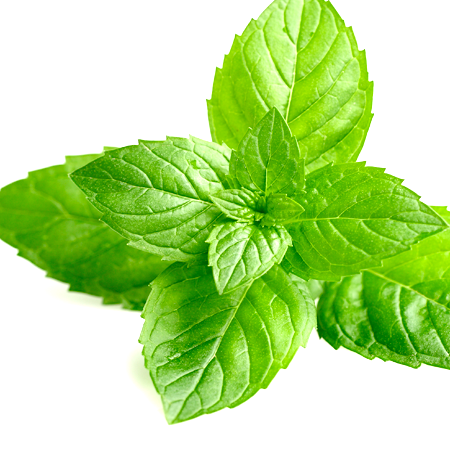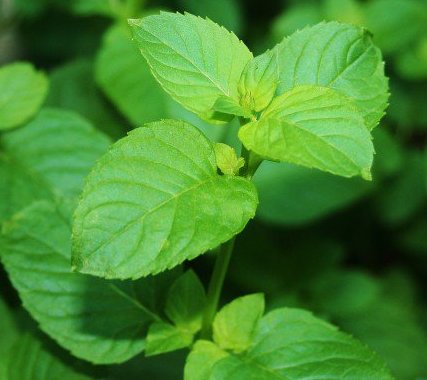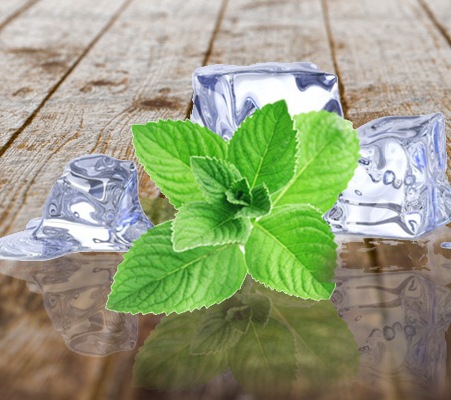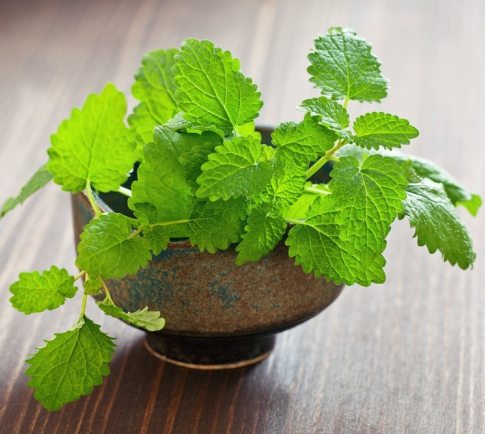





Botanical name Mentha piperita
Family Lamiaceae
Source Leaves
Origin India
Processing Method Steam Distilled
Color/Consistency A thin, colorless to pale yellow liquid.
Aromatic Summary / Note / Strength of Aroma A top note with a strong aroma, Mint has a sharp, penetrating scent based on its high menthol content. The minty sweetness of the vapor makes it one of the most popular Essential Oils.
Blends With Basil, Bergamot, Cajeput, Cedarwood, Eucalyptus, Lemon, Lime, Mandarin, Niaouli, Pine, Rosemary, Spearmint and Thyme.
Product Abstract
Peppermint is a hybrid mint, a cross between watermint and spearmint. Indigenous to Europe and the Middle East, the plant is now widespread in cultivation in many regions of the world. It is occasionally found in the wild with its parent species. Growing to approximately 60 cm tall, mint plants bloom from July through August, sprouting tiny, purple flowers in whorls and terminal spikes. Preparations for extracting mint essential oil begin with the leaves and flowering tops of the plant, where menthol.
History
Mint was first described in 1753 by Carl linnaeus from specimens that had been collected in England; he treated it as a species, but it is now universally agreed to be a hybrid. It is a herbaceous rhizomatous perennial plant that grows to be 30–90 cm (12–35 in) tall, with smooth stems, square in cross section. The rhizomes are wide-spreading, fleshy, and bear fibrous roots. The leaves can be 4–9 cm (1.6–3.5 in) long and 1.5–4 cm (0.59–1.57 in) broad. They are dark green with reddish veins, and they have an acute apex and coarsely toothed margins.
Harvesting/Extraction Information
The leaves and flowers are picked just before maturity when the essential oil content is at its greatest, and steam distilled. The oil is colourless or of a very pale yellow. The smell has an agreeable freshness, strong, penetrating, giving that feeling of being able to breathe deeply. Fresh, the oil is very fluid, but it thickens and darkens as it ages.
Common Usage
Caution
There are some risks in using too much peppermint oil, including allergic reactions, heartburn, and headaches. Basically, the same rules apply to using peppermint oil as to any other alternative supplement or dietary change; speak to a doctor, and if you don’t consult a professional, start with small topical doses or skin patch tests to see how it affects your system.
Key constituents
Piperitone oxide 50.8%
Germacrene D 12.7%
Piperitenone oxide 10.3%
Carvone 4.1%
b-Caryophyllene 4.1%
1,8-Cineole 4.0%
(þ)-Limonene 2.1%
(Z)-b-Ocimene 1.6%
Viridiflorol 1.4%
b-Pinene 1.1%
b-Myrcene 1.0%
Safety summary
Hazards None known.
Contraindications None known.
Organ-specific effects
Adverse skin reactions No information was found for either wild forest mint oil or piperitone oxide.
Systemic effects
Acute toxicity No information found.
Antioxidant/pro-oxidant activity Mint oil significantly scavenged DPPH and OH radicals.
Carcinogenic/anticarcinogenic potential No information was found for mint oil or piperitone oxide. The oil contains no known carcinogens.
Comments
Limited availability. The plant exists in several chemotypes, including a pulegone, a rotundifolone, a carvone and a linalool.